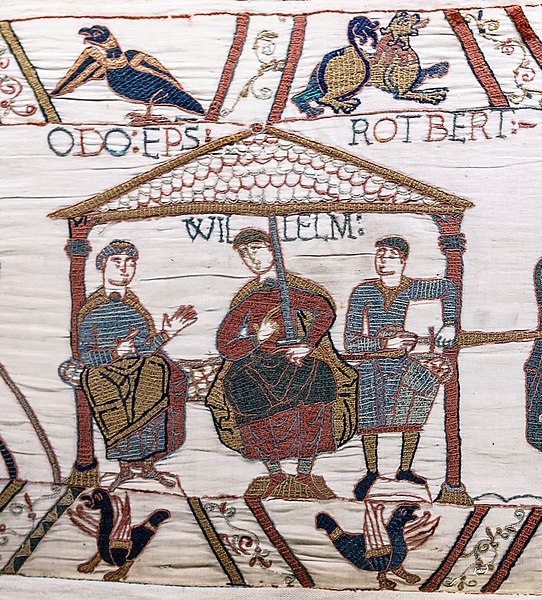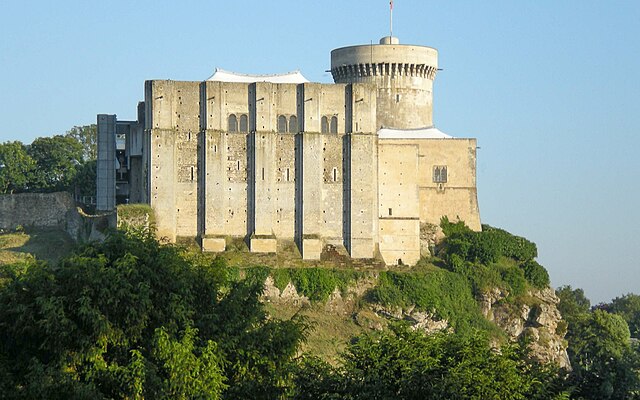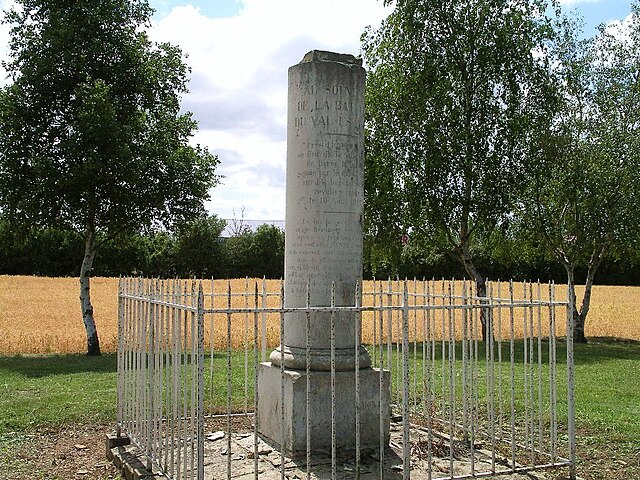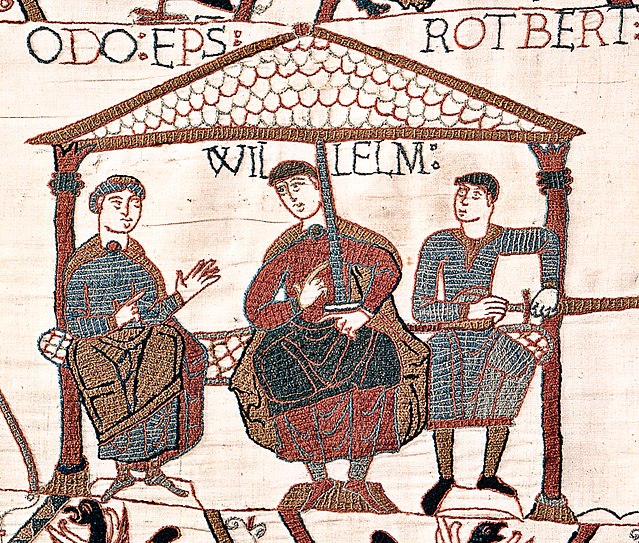Herleva was an 11th-century Norman woman known for having been the mother of William the Conqueror, born to an extramarital relationship with Robert I, Duke of Normandy, and also of William's prominent half-brothers Odo of Bayeux and Robert, Count of Mortain, born to Herleva's marriage to Herluin de Conteville.
Statue in Huy
The three sons of Herleva of Falaise: William, Duke of Normandy, in the centre, Odo, the bishop of Bayeux, on the left and Robert, Count of Mortain, on the right (Bayeux Tapestry, 1070s)
13th-century façade of the Abbey of Grestain, which was founded in 1050 by Herluin and Herleva
Statue of Arlette in Huy, Belgium, where the mother of William the Conqueror is considered a child of the country
William the Conqueror, sometimes called William the Bastard, was the first Norman king of England, reigning from 1066 until his death. A descendant of Rollo, he was Duke of Normandy from 1035 onward. By 1060, following a long struggle to establish his throne, his hold on Normandy was secure. In 1066, following the death of Edward the Confessor, William invaded England, leading an army of Normans to victory over the Anglo-Saxon forces of Harold Godwinson at the Battle of Hastings, and suppressed subsequent English revolts in what has become known as the Norman Conquest. The rest of his life was marked by struggles to consolidate his hold over England and his continental lands, and by difficulties with his eldest son, Robert Curthose.
William is depicted in the Bayeux Tapestry during the Battle of Hastings, lifting his helmet to show that he is still alive.
Château de Falaise in Falaise, Lower Normandy, France; William was born in an earlier building here.
Column at the site of the Battle of Val-ès-Dunes in 1047
Image from the Bayeux Tapestry showing William with his half-brothers. William is in the centre, Odo is on the left with empty hands, and Robert is on the right with a sword in his hand.








